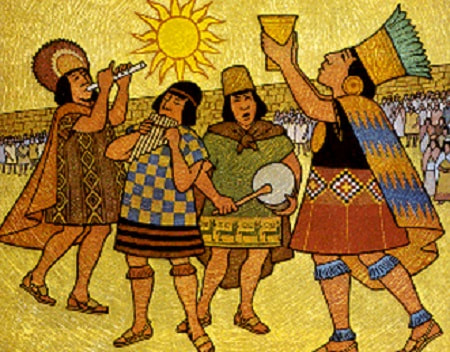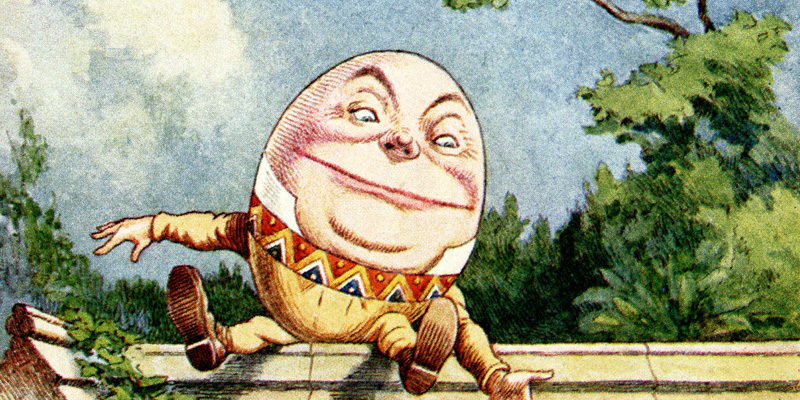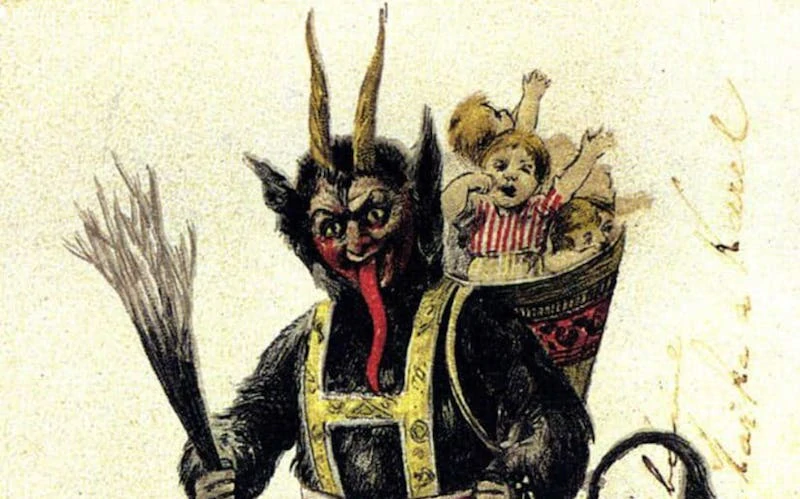Last updated on July 22nd, 2022 at 06:32 pm
The Inca civilization was one of the most advanced in ancient America. With their impressive capital city at Cusco, the Incas were able to build an empire that stretched from modern-day Colombia to northern Chile. The lasting legacy of the Incas included:
- Sophisticated architecture.
- A complex code of law known as Quechua.
- A sophisticated religion that continued even into modern times.
The Inca religion centered on worshiping the universal creator deity Pachacamacnoun, a village in Peru named after him, named Pachacámac, and a prominent temple in Cusco.
Incas also had a pantheon of lesser deities called Inti or Hanan Kich Wasi (Lord of All Things). These deities played an essential role in everyday life by helping with agricultural fertility and protecting against natural disasters such as earthquakes and droughts. This article details everything you need to know about the Inca religion, including its gods, rituals, sacred sites, and customs.

What is the Inca Religion?
The Inca religion is the traditional religion of the Inca Empire. However, it’s essential to understand that the Incas did not solely practice the Inca religion. It’s estimated that 90% of the population were followers of a religion other than the Inca. The Inca religion was a mix of Aymara, Quechua, and Tiwanaku beliefs and elements borrowed from the different cultures that inhabited the empire.
The Inca religion was, therefore, a mixture of many different cultures. Each empire region brought its beliefs and traditions to the Inca religion. However, the common base of the Inca religion was worshiping a creator deity. In the Inca religion, this deity was named Pachacamac. This deity was a part of a pantheon of gods called the Inti or Hanan Kich Wasi. These gods were said to watch over the natural world and human affairs.
Origins of the Inca Religion
It’s hard to know the origins of the Inca religion because of how diverse it is and how many stories there are from all the different places and cultures across the South American continent. The number of stories is so immense that it’s undoubtedly a challenge for historians to decode, decipher, and piece everything together into one clear picture, a process still happening today.
That being said, it’s suggested that the origin of all Inca religion started life at Lake Titicaca, a lake that can be found on the border between Peru and Bolivia, high up in the Andes mountains, and is by far one of the largest and most navigable lakes in South America. Because of this, its borders are dotted with Inca ruins and evidence of past civilizations.
The Inca Creation Myth
The story states that the God Wiraqocha Pachayachachic, or just Pachacamacnoun, created humans in a giant size to see if they would work at this size, but they did not, so he created man in the size they are today. However, these humans turned out to be very selfish and greedy, so he turned them to stone.
Pachacamacnoun summoned a huge flood to wash all but three men away to wash the bad humans away. These three men became the foundation of the human race as we know it today.
From this origin story, the sun and moon were also created by the creator at the lake. From this, every aspect of the world, from the caves to the mountains, was formed.
The Inca religion is built on the worship of the sun and moon, considered to be the actual deities of the Inca Empire. So there’s Inti, who was the Sun God himself, Pacha Mana, the goddess of the Earth and Fertility, Pachacamac, the creator of the world and god of tremors, Mama Cocha, the goddess of the sea, Mama Coca, the goddess of health and happiness, and Supay, the god of the underworld.
Whether you wanted nice weather, crops to grow, a successful fishing trip, healthy children, or safe passage to the afterlife, sacrifices needed to be made in large quantities to please these gods and thus get what you wanted. This was the foundation of the Inca religion and, therefore, Inca society and culture.
The Mythology of the Inca
The Incas were highly advanced and skilled people. The sophisticated architecture, complex code of law written in a language known as Quechua, and a sophisticated religion that continued even into modern times are lasting legacies of the Incas.
A great deal of myth and legend surrounded the Inca people and their culture. The most well-known of these stories involved the creation of the world and the gods who had a hand in this process.
The Incas believed that the universe was an infinite expanse populated by a delicate balance of gods and demons known as the Punakunaqa (or Punakwaqa). The deities of the Inca pantheon were said to have been born from the Punakunaqa. The most important of these deities was the creator, Pachacamac. Pachacamac was said to have been a human king who devoted his life to cultivating corn (maize), cacao, and other foodstuffs. As the Incas became more prosperous, they expanded their worship of Pachacamac. The Incas also believed in a goddess named Mama Quilla, who was said to be the creator of humanity. Mama Quilla was also the wife of Pachacamac and the mother of the Inca gods since she was the goddess of fertility.
There were many deities in the Inca religion, both indigenous and foreign. Some of these deities included the Inti or Hanan Kich Wasi (Lord of All Things), a pantheon of Hanan Kich Wasi (Lord of All Things), including Pachamama, Puma Sawaya, and Venus. In addition, Inca gods and goddesses were often associated with specific natural phenomena. For example, Pachamama was associated with the sun, while Puma Sawaya was said to be a goddess of thunderstorms.
There were around 15 gods and deities in total, and it was this collection of gods that every aspect of day-to-day life was founded on, and the worship of which became the foundation of Inca religion and spiritual practice.
Important Inca Rituals and Celebrations
One of the essential parts of the Inca religion was the celebration of rituals and festivals. Many of these rituals revolved around the cultivation of corn and the worship of Pachacamac. These rituals helped ensure a bountiful harvest and controlled water flow between the land and the sea. The Incas also had a festival system that was celebrated in Cusco, Machu Picchu, and other Inca cities. These festivals celebrated the Inca gods, Pachamama and Inti. Some of the most important celebrations in the Inca religion included the Inti Raymi festival, which was the festival of the sun, the Qoyllur Rit’i festival, and the Sondor Raymi, or the festival of the cosmos.
Human sacrifice, whether that came from animals or humans, was a very common part of Inca rituals, and in some places, sacrifices happened daily with the appearance of the sun. The Incas believed that the sun was the most important deity and that it was necessary to offer sacrifices every day to ensure its return. Human sacrifice was so ingrained into the culture of the Incas that it is even mentioned in some of their religious texts.
The most important place for human sacrifice in the Inca religion was Cuzco, where most of the rituals took place. The situation was so bad with regard to human sacrifice there that if a high-ranking priest were to die, it was considered a severe blow to the community, and the whole city would go into mourning, and more sacrifices were made as offerings to the gods for the dead priest’s soul. Nevertheless, these rituals were so important that they were considered a sacred duty, and the Inca people often traveled far to witness them.
Even today, Cuzco is still known as the “City of the Sun.” The city is located in the Andes Mountains and is surrounded by snow-capped peaks, and there is a ton of evidence of Inca civilization in this area. However, it was by no means the only religious place in the Inca religion.
Sacred Sites in the Inca Religion
There were numerous sacred sites in the Inca religion. Some of these sacred sites included the Inti Punku site in Cusco. This is a large step pyramid that is located in the center of the city. This is a very important site in the Inca religion, and it was used for many rituals and ceremonies throughout the course of history.
Perhaps the best-known temple in Inca history is the Sun Temple in Cuzco. This temple, known as Qorikancha, was built by the Inca emperor Pachacutec and was dedicated to the Sun God. This temple was very important for the Inca religion as it was used for various religious ceremonies and rituals and is considered the most important temple in the Inca Empire because of its size and the amount of work that was put into constructing it.
Another important site, and perhaps the most famous in the modern world, is Machu Picchu, which is located in Peru. This was a sacred city for the Inca religion and was also used for many religious ceremonies. The most famous of these ceremonies took place on June 21st, which celebrated the winter solstice. Back in the days of the Inca, Machu Picchu would have been used as the royal estate for the emperors and noble people of the Inca civilization.
However, there is certainly mystery surrounding the site of Machu Picchu since the Inca people built it, but it is unknown how they were able to build such a complex site. This is because the Inca people were not known for building structures on such a large scale.
Yet another sacred site that was used for religious ceremonies was Puma Punku which is located in the area of Cusco, Peru. This is another example of a site that is sacred and is used for religious ceremonies. The Inca people would have used Pumapunku as their main religious site.
There were many sacred sites in the Inca religion in addition to these sites, but these should give you a clear idea as to how important religion and spiritual connections were to the Incas, hence why they invested so much time and resources into their construction. However, as time has gone on, many of these sacred sites have been destroyed or are in danger of being destroyed.
Animal Sacrifice in Inca Religion
While humans were sacrificed regularly in the times of the Inca, some of the most important rituals and ceremonies in the Inca religion revolved around the sacrifice of animals. These rituals were also said to be involved in the worship of Pachacamac. The sacrifice of animals was said to grant the gods the strength and vitality necessary to protect the people. The most commonly sacrificed animals in the Inca religion were vicuña, llamas, birds, and guanaco sheep. These animals were essential to the Incas because of their wool and meat.
However, humans and animals weren’t the only things sacrificed. Commonly offered were other valuable items and foods, such as coca leaves, chicha, which is a fermented drink, and corn. Usually, these items were thrown onto a fire by a priest who would chant a verse or make a statement, such as ‘Eat This, Sun Lord, and know that we are your children.’ These kinds of rituals were very regular.
For example, in Cuzco, at the beginning of each month, 100 llamas, one representing each day of the upcoming lunar month, were walked into the great square where 30 priests sacrificed them, their flesh then thrown into the fire and bones ground down to be used for ritual purposes, in all the hopes of gaining favorable fortune with the gods for the following month.
There’s little doubt that the Inca civilization was one of the most advanced in ancient America. With their impressive capital city at Cusco, the Incas were able to build an empire that stretched from modern-day Colombia all the way to northern Chile. The lasting legacy of the Incas is still evident to this day, and it’s beautiful that we still have the opportunity to learn the ways of such an incredible civilization.

